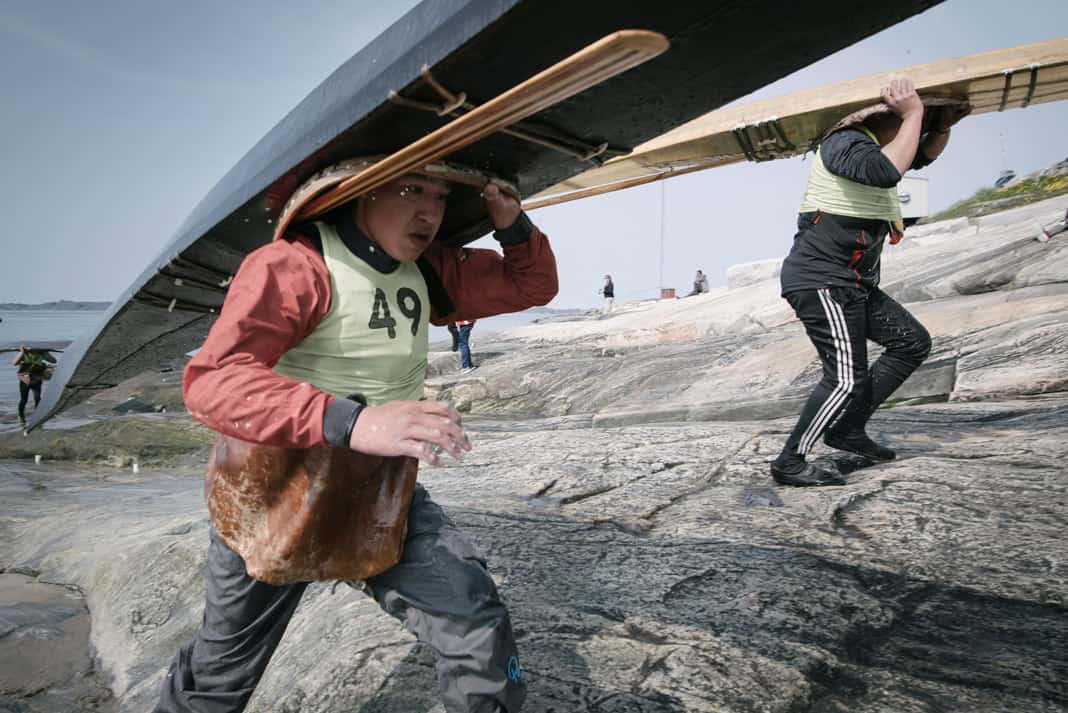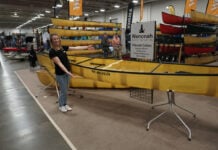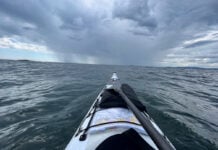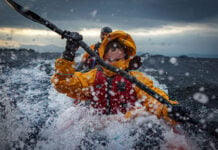In celebration of Native American Heritage Month, Google released a doodle on November 15, 2025 celebrating the history of the kayak illustrated by Inuit Nunangat artist Natashia Allakariallak.
Celebrating Native American Heritage Month with the history of the qajaq
The doodle depicts a traditional Indigenous Arctic qajaq, used for thousands of years for hunting, fishing, and transportation. The qajaq serves as the early prototype for the modern kayaks we see widely available for recreational use today. The first developers of the predecessor to the kayak include Northern trines such as the Inuit, Aleut, Inupiat, and Yup’ik.
Rather than the fiberglass and gel coat of the modern sea kayak, the traditional qajaq was made using skin on frame— often dried seal skin stretched over a frame of whalebone or driftwood. Rather than for recreation, the traditional qajaq was designed for Indigenous Arctic hunters to harvest seals or whales from the water and each boat was customized to the individual paddler. The word qajaq comes from the phrases ‘man’s boat’ or ‘hunters boat’ in Inuktut dialects.
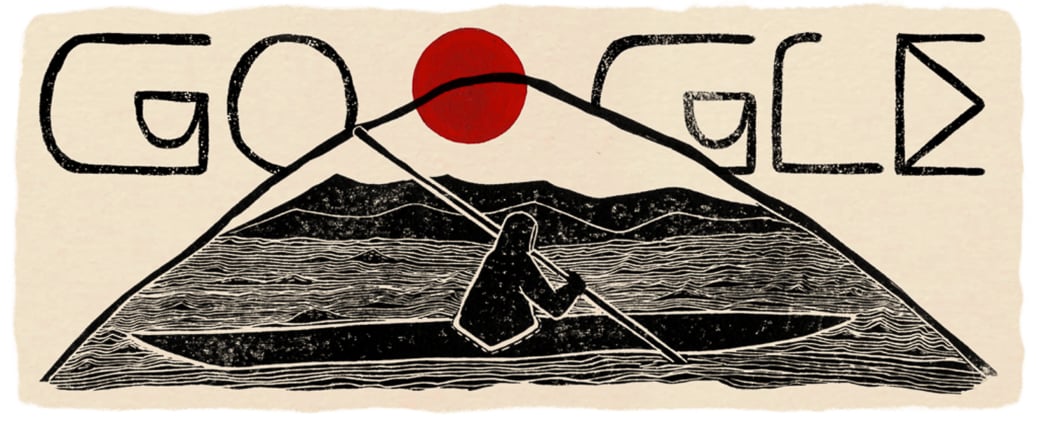
“The qajaq, which has been created by Inuit, has now been adopted and used by the entire world,” shared qajaq doodle artist Natashia Allakariallak in a Q&A with Google. “It is an item from our culture that has allowed us to thrive for thousands of years and is still used today.”
What traditional qajaqs look like in Greenland today
Today in Greenland, traditional qajaq paddlers still gather to practice traditional Greenland rolling, which includes 35 different rolls. Once a pivotal means of self-rescue for the traditional Arctic qajaq hunters, today paddlers from all over travel to compete in the National Qajaq Championships.
Rather than a neoprene spray skirt or PFD like paddlers wear today, traditional qajaq paddlers wore a tuilik; a fitted, waterproof jacket made of seal skins or large mammal intestines that sealed around the face, wrist and qajaq cockpit. The tuilik also served as additional buoyancy in the event of capsize; plenty of trapped air inside aided in rolling, or righting a capsized kayak without exiting. Today, a neoprene version of the tuilik for traditional Greenland rolling practice.
“It is important that people know where the qajaq originates from,” Allakariallak added. “I would like for people to honour the original design(s) and give credit where it is due. Inuit are an incredibly resourceful people and have adapted to many waves of colonial pressures, yet, we continue to strive for success and we celebrate the beauty of our culture.”



